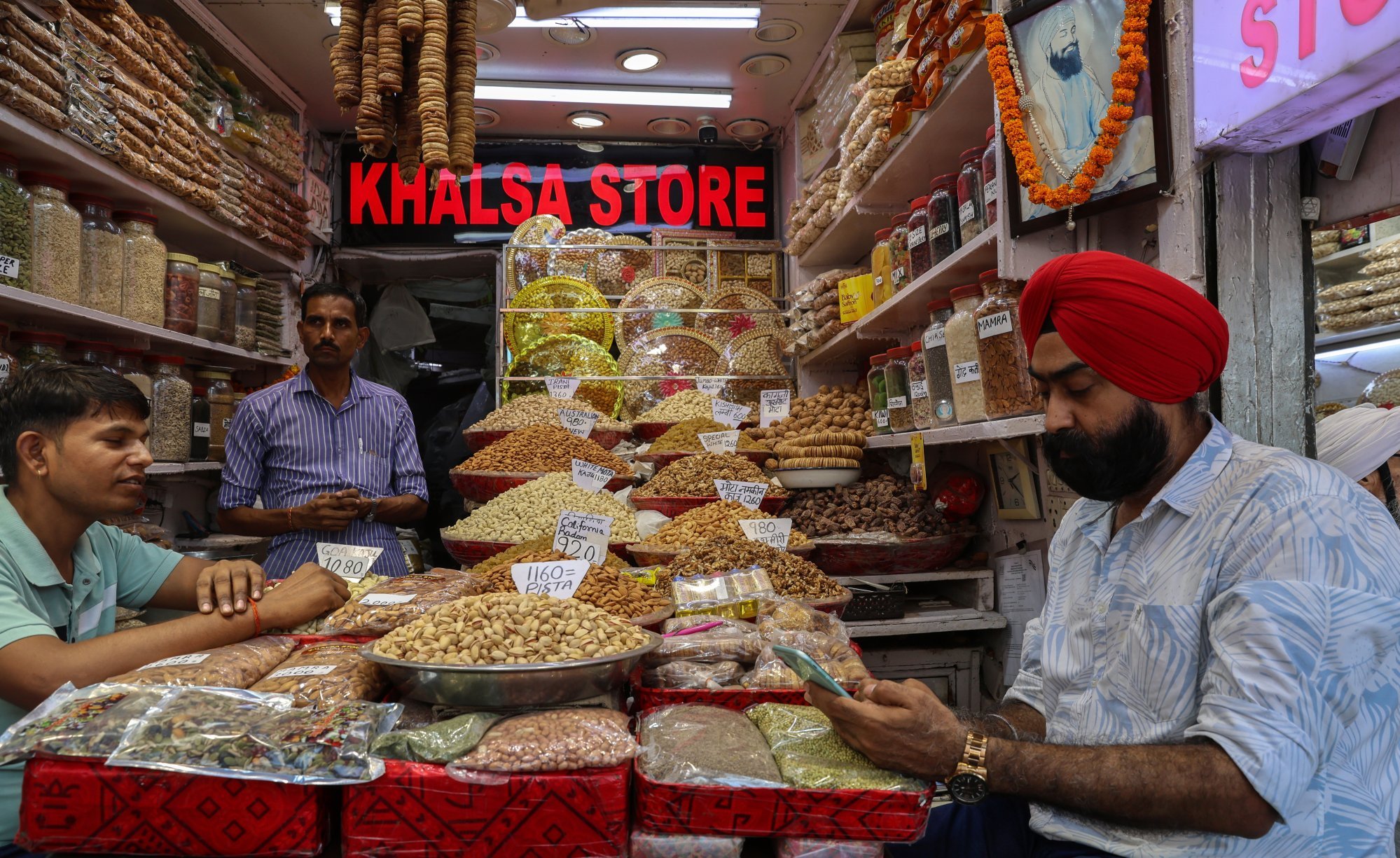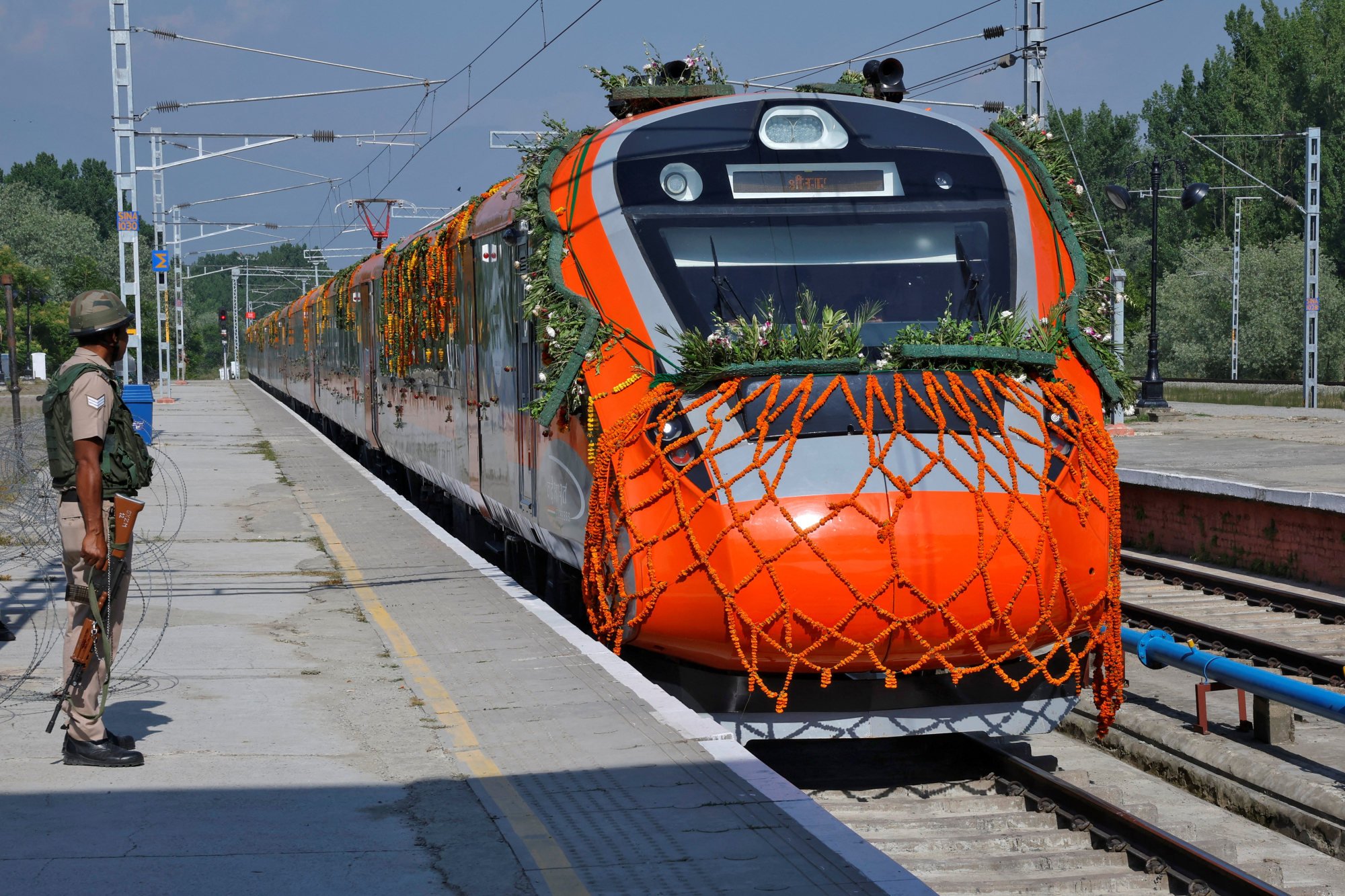India expected to maintain robust growth despite Pakistan tensions, trade woes
Economy could grow by about 6.5 per cent this financial year, analysts say, with rate cut predicted to boost consumption, investment

India is poised to remain the world’s fastest-growing major economy this year, analysts have said, with a recent jumbo rate cut by its central bank expected to boost consumption and investment, even as the country contends with fresh military tensions with Pakistan and an uncertain global trade environment.
The Reserve Bank of India (RBI) last week delivered a larger-than-expected interest rate cut of 50 basis points and reduced the cash reserve ratio – the minimum amount of capital banks must park with the central bank – by one percentage point. The move is projected to inject about US$29.15 billion into the banking system by year-end.
The surprise monetary easing followed robust economic performance, with gross domestic product expanding 7.4 per cent in the January to March quarter – an acceleration that helped prompt the RBI’s pre-emptive push to sustain growth.
“It looks unlikely that India will be able to maintain the 7.4 per cent growth, but it should be able to record a growth of 6.5–7 per cent in this financial year [ending March 2026],” Sujan Hajra, chief economist and executive director at the Anand Rathi group, told This Week in Asia.

India is set to overtake Japan as the world’s fourth-largest economy by the end of this calendar year, according to projections by the International Monetary Fund. The impact of India’s tensions with Pakistan and volatile global environment was likely to be offset by the central bank’s monetary easing, Hajra said.
US President Donald Trump’s threats of steep trade tariffs and the prospect of an economic slowdown due to global uncertainty over how negotiations between different countries and Washington will shape up over the coming months have prompted other central banks to ease monetary policies.
China, South Korea and Indonesia have also cut rates to support their economies, although not to the same extent as the RBI.
India’s central bank has chosen to front load interest rate cuts to boost growth as inflation has cooled, according to Hajra.
Retail inflation dropped to a near six-year low of 3.16 per cent in April, sharply below the central bank’s medium-term target of 4 per cent. With a steeper than expected cut in policy rates and ample liquidity, the RBI is expected to prod retail banks to ease up lending to consumers.
Hajra said global trade tensions following Washington’s move to impose tariffs on various countries were unlikely to weigh on India’s economy because it was predominantly domestic-dependent.
Risks remained, however, with signs of infirmity “in the urban demand”, though rural demand in the country typically had a stronger impact, he added.

While some Indian state governments had been emphasising too heavily on welfare spending that could skew their budgets from capital expenditure in building up long-term assets to boost the growth trajectory, Hajra said the issue was unlikely to be a significant risk because it was not pervasive across the country.
The State Bank of India, the country’s largest bank, estimated in a recent report that the economy would grow by 6.3 per cent to 6.5 per cent this financial year, which would help it retain its position as the fastest-growing major economy.
It said strong economic fundamentals, a robust financial sector and increased domestic savings were expected to fuel investments.
An ANZ report on May 30 noted that India’s January to March GDP growth was stronger than expected, but said agriculture growth had not been as high as expected and the manufacturing sector was strained.
The central bank was expected to continue easing its monetary policy, it added.
Kevin Carter, founder of EMQQ Global, a US-based investment management and research firm which has a specialised India-focused fund called INQQ, told a webinar on Friday that he was bullish about investment prospects in India for several reasons.
Tax cuts coupled with GDP growth were “driving massive consumption growth”, he said.

Over the last decade, the country had started to run more like a business with infrastructure growth virtually doubling, with high-speed trains connecting big cities like Mumbai and Ahmedabad set to start, Carter noted.
The airline industry was also poised to grow with an expansion in the number of airports.
“And this is why India lagged behind China when China was building the world’s best infrastructure. India couldn’t even get the power to work,” Carter said.
But one of the biggest reasons for growth is India’s public digital infrastructure which has enabled millions of unbanked consumers to open bank accounts, coupled with the availability of cheap internet connectivity and data that is fuelling a boom in digital transactions, according to Carter.
Indian billionaire businessman Niranjan Hiranandani, co-founder of the Hiranandani group which deals in real estate, was optimistic about the country’s growth prospects, highlighting that the economy was expected to grow at more than 6 per cent in the coming years.
“However, true prosperity lies in inclusive growth that spans beyond assets and investments, impacting employment, quality of life and per capita income. It’s imperative to ensure that this growth is balanced, spreading across diverse sectors and fostering self-sustainability,” he said.